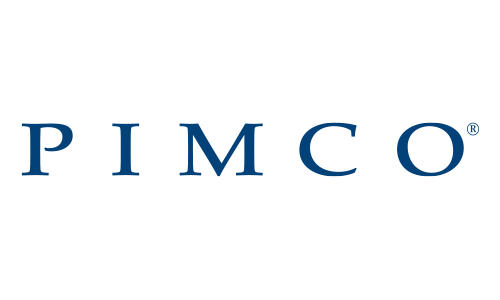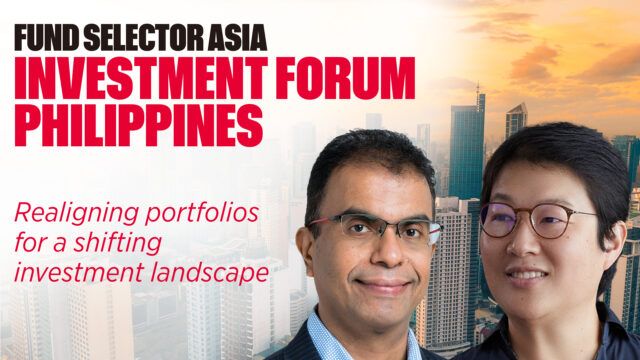In what ways have investors adapted their approach to tactical allocations in response to today’s market dynamics?

Jennifer: During periods of macro dominance, the market often reaches for certainty and what can be seen today rather than what might happen in the future. In equity markets, we’ve seen this manifest in a move towards perceived safety at the expense of higher growth and longer-duration assets.
Conventional thinking dictates that in a world of higher interest rates, growth further into the future becomes less valuable and is marked down. As a result, it becomes the here and now that people gravitate to.
This move toward safety and certainty risks overlooking some fantastic opportunities if one adopts a patient, long-term approach. Indeed, recent fear in markets has created attractive valuations in areas from disruptive growth to those companies perceived to be more economically sensitive. By looking through the noise, by being highly selective and by focusing on those companies with structural growth drivers, there remains plenty for investors to be excited by.

Sashi: Economic growth has been more resilient than expected in Q1. However, banking sector turmoil has raised recession odds. Most managers surveyed in our latest Investment Manager Pulse think inflation has peaked, but will take a while to get to the Fed’s target. Investors are generally cautious on US equities, which are viewed as overvalued. They are more constructive on international equities and high-quality bonds. In fixed income, they favour emerging markets debt and the more defensive sectors of the US investment-grade market such as Treasuries, agency MBS and municipal bonds and are more bearish on high yield debt and bank loans.
Fund selectors dedicate significant resources to isolating top managers, but tactical portfolio adjustments made in response to shifting macro conditions may detract from that effort when notoriously hard-to-predict timing becomes a key variable. Some prefer to rely on selection and longer-term strategic asset allocation for that reason, while one could also argue that applying factor-level changes when warranted could be the better approach.

PIMCO: At PIMCO, our current base case is for the US to enter a mild recession in the next 6-18 months as a result of restrictive monetary policies. In terms of the direction of interest rates going forward, we believe the Federal Reserve is close to the end of this tightening cycle and will pause rather than pivot toward rate cuts.
Regardless of the changing market narratives, we believe the underlying macro conditions are pointing to the same fundamental theme – bonds are back.
Bonds continue to look attractive at current yield levels, offering a balance between income generation and cushion against economic downside scenarios. We prefer higher-quality, more liquid investments and are avoiding lower-quality, more economically sensitive areas, such as lower-rated floating-rate corporate credit that are most exposed to the effects of tighter monetary policy.
Which assets, sectors and strategies have the potential to offer resilient and diversified returns in the second half of 2023?

Jennifer: The ability to forecast market movements over a six-month period is not a skill we possess. Indeed, we would argue almost no one can, given how complex a system the stock market is.
We know the next few years will be challenging, but they should also be rewarding for the selective growth investor. The structural growth opportunities that will drive change remain firmly in place. An example of this would be healthcare. The giant steps made in improving understanding of the implications of our genetic nuances mean that healthcare will continue to personalise. There are many more changes and therefore opportunities in varied sectors that we are seeing. According to the latest US census data, most retail is still offline. Cloud computing is still under 20% of IT spending. Under 1% of cars in the US are fully electric. We see significant shifts in these data points and as a result, see these as fertile hunting grounds for the future stock market winners.
A tighter financing environment also offers the prospect of more rational competition after years of cheap finance. The best businesses will still secure funding, but many others will struggle to sustain themselves – this puts large swathes of the index at risk. It will be important, in our view, to have a strategy that is focused on adaptable companies with the strongest and most resilient business models.

Sashi: While the backdrop warrants continued caution, performance among public real estate securities reflects an investor focus on macro risks to a degree that underappreciates a particularly compelling situation. But, REIT fundamentals remain on strong footing and they should stand out due to their inflation-hedging characteristics and limited supply-chain exposure. Not only do REITs offer traits that can serve investors well in current conditions, but they also represent opportunities that should be hard to ignore as visibility improves due to a disconnect between REIT prices and the private market value of the real estate they hold. The big disconnect between private and public real estate pricings may create strong rebound opportunities for investors. Historically, when this level of disconnect was seen in the past, public real estate has significantly outperformed private real estate by 25–50% on a three-year forward basis.
The lending environment may face challenges as a result of the recent banking turmoil, but for REITs, we see growth opportunities in areas with strong fundamentals, such as healthcare, where income growth is anticipated to accelerate as occupancies and rents increase and expenses decline in the next few years.
We also continue to favour strong rent growth and need-based facilities, e.g., industrial and senior housing, that will provide cushion in a slowing economy. Meanwhile, we remain cautious on office, retail and lodging as they are more sensitive to slowdowns in consumer spending and corporate activity.

PIMCO: We favour bonds for their diversification, capital preservation, and upside opportunities. Specifically, we prefer to add high-quality duration at attractive levels, especially during sell-offs if inflation fears resurface. Starting yields historically have tended to be good indicators of future returns in fixed income and the current levels make duration competitive with equity yields. If the Fed reverses policy more swiftly, duration could still outperform equities, according to our historical analysis.
In credit, we favor staying liquid via credit default swap indices and prefer index exposure over generic individual issuers. We retain a preference for structured, securitised products backed by collateral assets, and we believe US agency mortgage-backed securities remain attractive since they are typically very liquid and are backed by a US government or agency guarantee.
On rates, we are constructive on duration given slowing growth and the view that policy rates are close to peaking. We find select, high-quality emerging market duration offers a diversified, attractive source of return for investors.
How can investors be more proactive in risk management to better protect portfolios going forward?

Jennifer: Real risk, for us as long-term investors anyway, is the permanent loss of capital. It’s about poor investment analysis and a lack of appropriate diversification. This holds true during all periods.
A key component of our analysis recently has been ensuring portfolio companies are resilient in the face of a more challenging macroeconomic backdrop. Pricing power, enabled by competitive edge, will help businesses thrive in an inflationary environment. Funding advantage, through strong balance sheets and cash flow profiles, will enable the strong to take advantage of the weak as interest rates remain elevated. And companies that are not solely reliant on GDP growth, through disruption and the creation of new business models, will happily flourish if they offer better, cheaper, higher quality ways to meet people’s needs than they have now.
It is also important to mention volatility here. Volatility, although uncomfortable, is not risk. In fact, when investing in equities, one needs to accept that volatility is inevitable on the path to long-term wealth creation.
Investors need to be aware of the risks, but also continue to seek out opportunities the current investment landscape presents. This requires a forward-looking mindset, which is not solely grounded in backward-looking risk models and an acceptance that volatility, while uncomfortable, should be embraced rather than feared.

Sashi: Risks, especially rare and unexpected tail risks, can be difficult to prepare for. But there are ways investors can hedge their bets. Investors can acknowledge any gaps and shortcomings in their investment-risk monitoring, chief of which are failure to detect risks early or react to them speedily. There are three main approaches to manage investment risk: holistic monitoring across asset classes, regular risk-scenario analysis and regular evaluation of the effectiveness of risk-management processes.
The best insurance, in our view, is taking a long-term view and diversifying portfolios. PGIM is in the business of active management and active managers build portfolio strategies that are fit for fighting in a variety of scenarios.
Monitoring leverage, collateral arrangements and liquidity positions can help investors avoid becoming a forced seller at the least desirable time. When considering risks that are subject to extreme outcomes (and potentially not diversifiable), investors should also consider stress testing as opposed to looking at traditional statistical measures. The pandemic, the global financial crisis, the dot-com bubble – these events were all foreseeable to different degrees. Investors must either gameplan for the unexpected or expect to be blindsided.

PIMCO: While we favor bonds, we are more cautious on equities amid an increasingly fragile growth outlook and overly optimistic valuations. These concerns are most prevalent in the US, which represents our largest underweight, but also lead us to be cautious on European and Japanese equities. Conversely, we believe the Chinese reopening is in its early stages so we are constructive on emerging markets but sizing is modest as idiosyncratic geopolitical issues remain a risk.
We are cautious on the US dollar due to a likely peaking US policy rate, an anticipated US relative growth deficit and overvaluation concerns. Instead, we favor emerging markets’ currencies, which should be supported by stronger growth as well as valuation tailwinds, and to a lesser extent, the Japanese Yen, which should benefit if Japanese rates move higher. We are neutral on the euro as we expect higher policy rates in the region to be offset by slowing growth.

















